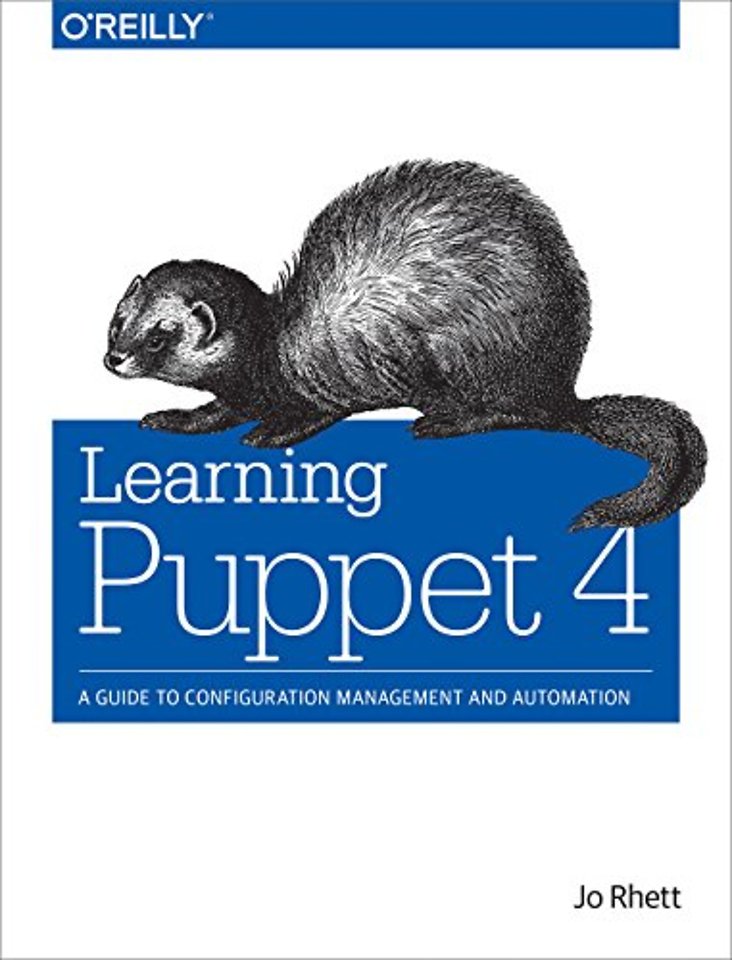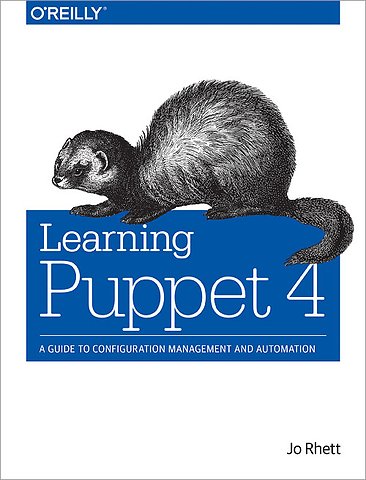


Jo Rhett is a network architect and DevOps engineer with 20 years of experience conceptualizing and delivering large-scale Internet services.
Meer over Jo RhettLearning Puppet 4
A Guide to Configuration Management and Automation
Samenvatting
If you’re a system administrator, developer, or site reliability engineer responsible for handling hundreds or even thousands of nodes in your network, the Puppet configuration management tool will make your job a whole lot easier. This practical guide shows you what Puppet does, how it works, and how it can provide significant value to your organization.
Through hands-on tutorials, DevOps engineer Jo Rhett demonstrates how Puppet manages complex and distributed components to ensure service availability. You’ll learn how to secure configuration consistency across servers, clients, your router, and even that computer in your pocket by setting up your own testing environment.
- Learn exactly what Puppet is, why it was created, and what problems it solves
- Tailor Puppet to your infrastructure with a design that meets your specific needs
- Write declarative Puppet policies to produce consistency in your systems
- Build, test, and publish your own Puppet modules
- Manage network devices such as routers and switches with puppet device and integrated Puppet agents
- Scale Puppet servers for high availability and performance
- Explore web dashboards and orchestration tools that supplement and complement Puppet
Specificaties
Inhoudsopgave
Part 1: Controlling with Puppet Apply
1. Thinking Declarative
2. Creating a Learning Environment
3. Installing Puppet
4. Writing Manifests
5. Using the Puppet Configuration Language
6. Controlling Resource Processing
7. Expressing Relationships
8. Upgrading Puppet 3 Manifests
9. Wrap-Up of Puppet Basics
Part 2: Creating Puppet Modules
10. Creating a Test Environment
11. Separating Data from Code
12. Using Modules
13. Designing a Custom Module
14. Improving the Module
15. Extending Modules with Plugins
16. Documenting Modules
17. Testing Modules
18. Publishing Modules
Part 3: Using a Puppet Server
19. Preparing for a Puppet Server
20. Creating a Puppet Master
21. Creating a Puppet Server
22. Connecting a Node
23. Migrating an Existing Puppet Master
24. Utilizing Advantages of a Puppet Server
25. Managing TLS Certificates
26. Growing Your Puppet Deployment
Part 4: Integrating Puppet
27. Tracking Puppet Status with Dashboards
28. Running the Puppet Agent on Windows
29. Customizing Environments
30. Controlling Puppet with MCollective
31. Managing Network Infrastructure with Puppet
32. Assimilating Puppet Best Practices
33. Finding Support Resources
Appendix A: Installing Puppet on Other Platforms
Appendix B: Configuring Firewalls on Other Platforms
Appendix C: Installing Ruby
Index
Anderen die dit boek kochten, kochten ook
Net verschenen
Rubrieken
- aanbestedingsrecht
- aansprakelijkheids- en verzekeringsrecht
- accountancy
- algemeen juridisch
- arbeidsrecht
- bank- en effectenrecht
- bestuursrecht
- bouwrecht
- burgerlijk recht en procesrecht
- europees-internationaal recht
- fiscaal recht
- gezondheidsrecht
- insolventierecht
- intellectuele eigendom en ict-recht
- management
- mens en maatschappij
- milieu- en omgevingsrecht
- notarieel recht
- ondernemingsrecht
- pensioenrecht
- personen- en familierecht
- sociale zekerheidsrecht
- staatsrecht
- strafrecht en criminologie
- vastgoed- en huurrecht
- vreemdelingenrecht





